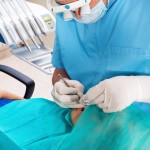
The surgical removal of lower third molars is a common operative procedure with common post-operative problems of pain swelling and trismus. A number of surgical approaches have been used with triangular and envelope flaps being the two most commonly used.
The aim of this review was to compare the effect of envelope and triangular flaps for mandibular third molar surgery with regard to pain, swelling, and trismus.
Methods
Searches were conducted in the PubMed/Medline, Virtual Health Library (VHL; LILACS and IBECS), Cochrane Library, Scopus, OpenGrey and Google Scholar databases with no restrictions on language or date of publication. . Randomised clinical trials (RCTs) evaluating the effect of the flap design (triangular or envelope) on pain, swelling, trismus dehiscence, alveolar osteitis, ecchymosis, and periodontal status were considered for inclusion.
Three reviewers independently, selected studies, extracted data and assessed study quality using the Cochrane risk of bias tool. Outcome measures were reported as mean differences (MD) or standardised mean difference (SMD) with 95% confidence intervals (CI).
Results
- 20 RCTs (14 crossovers,6 parallel) involving 770 patients were included.
- Patients ranged from 15 to 61 years of age.
- Sample sizes varied from 12 to 196 patients.
- 14 studies were considered to be at low risk of bias, four at unclear risk, and 2 at high risk of bias.
- 18 studies contributed to the meta-analyses
- Pain: meta-analyses were conducted for days 1-7 post operatively (see table) a statistically significant difference in favour of the envelope flap was noted on day 6 but not on any other day.
| No. days post-op | No. of studies | Mean Difference (95%CI) |
| 1 | 3 | -0.25 ( -1.33 to 0.82) |
| 2 | 4 | -0.13 ( -0.96 to 0.70) |
| 3 | 4 | -0.55 (-1.31 to 0.21) |
| 4 | 3 | -0.40 (-1.20 to 0.39) |
| 5 | 2 | -0.28 (-0.93 to 0.36) |
| 6 | 2 | -0.41 (-0.76 to -0.07) |
| 7 | 4 | -0.18 (-0.52 to 0.16) |
- Oedema(swelling): No significant differences were seen between the two flap types.
- Trismus: No significant differences were seen between the two flap types at 2, 3, 7, or 14 days postoperatively.
- Dehiscence: This was assessed in 5 studies (186 triangular, 180 envelope flap) with no statistically significant differences between to two flap designs
- Ecchymosis/bruising: 3 studies (130 patients) contributed to a meta-analysis which showed a greater change of ecchymosis with use of an envelope flap; Odds ratio (OR) = 4.58 (95%CI; 1.34 to 15.71)
- Osteitis: 3 studies assessed osteitis with no differences in occurrence between to two flap designs; OR =1.08 (95%CI; 0.37 to 3.14).
- Periodontal condition and surgical time were also evaluated in a small number of studies findings no differences between the two flap techniques.
Conclusions
The authors concluded: –
flap design did not influence pain, oedema, trismus, dehiscence, or osteitis in the way these variables were assessed. On the other hand, the envelope flap presented better results for postoperative ecchymosis in relation to the triangular flap in mandibular third molar surgeries. Furthermore, the triangular flap appeared to present a lower probing depth than the envelope flap on day 7 postoperative. Thus, it is suggested that more randomized clinical trials with methodological rigor and standardization should be performed in order to provide better scientific evidence regarding the best flap design that can be recommended for a more comfortable postoperative period
Comments
The reviewers have searched a wide range of databases to identify relevant studies. All the included studies are RCTs with a majority being cross-over studies. However, given how common a procedure third molar surgery is the studies are relatively small with a mean of 40 patients per trial in the cross-over studies (range 12-196) and 46.5 for the parallel studies (range 20 – 80). Looking at the risk of bias summary table only 3 of the studies were considered to be at low risk of bias for all the domains with 13 having domains at unclear risk and 5 showing some domains at high risk. This suggests that the authors’ assessment is overly generous.
There was heterogeneity in the way some of the outcomes were measured e.g. swelling, trismus with some outcomes only being assessed in a limited number of studies. Overall the findings suggest that there is no difference in outcomes between the two flap designs. A previous review which focused on just periodontal outcomes (Dental Elf – 20th Oct 2016) also found no differences with different flap designs.
Links
Primary Paper
Lopes da Silva BC, Machado GF, Primo Miranda EF, Galvão EL, Falci SGM. Envelope or triangular flap for surgical removal of third molars? A systematic review and meta-analysis [published online ahead of print, 2020 Jan 20]. Int J Oral Maxillofac Surg. 2020; S0901-5027(20)30001-1. doi:10.1016/j.ijom.2020.01.001
Other references
Dental Elf – 20th Oct 2016
